This article needs additional citations for verification .(April 2019) |
| El Cantor de Buenos Aires | |
|---|---|
Release date |
|
| Country | Argentina |
| Language | Spanish |
El Cantor de Buenos Aires is a 1940 Argentine film of the Golden Age of Argentine cinema.
This article needs additional citations for verification .(April 2019) |
| El Cantor de Buenos Aires | |
|---|---|
Release date |
|
| Country | Argentina |
| Language | Spanish |
El Cantor de Buenos Aires is a 1940 Argentine film of the Golden Age of Argentine cinema.
| | This section is empty. You can help by adding to it. (July 2010) |

Buenos Aires is the capital city of Argentina, on the western shore of the Río de la Plata on South America's southeastern coast. "Buenos aires" is Spanish for "fair winds" or "good airs". Buenos Aires is classified as an Alpha global city, according to the Globalization and World Cities Research Network (GaWC) 2020 ranking.
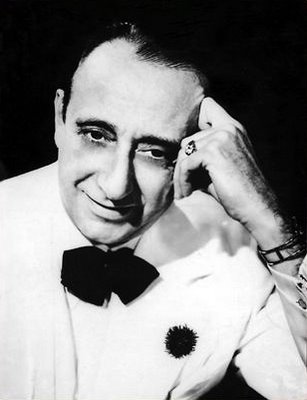
Juan d'Arienzo was an Argentine tango musician, also known as "El Rey del Compás". He was a violinist, band leader, and composer.

Aníbal Carmelo Troilo, also known as Pichuco, was an Argentine tango musician.

Eduardo Mallea was an Argentine essayist, cultural critic, writer and diplomat. In 1931 he became editor of the literary magazine of La Nación.
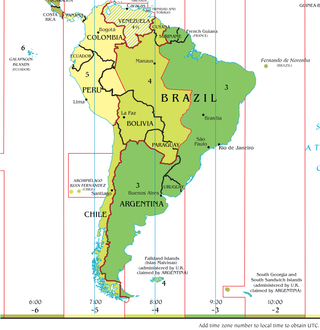
Argentina is located at a longitude that would naturally put it in the UTC−04:00 or UTC−05:00 time zone; however, it actually uses the UTC−03:00 time zone. Argentina determines whether to change clocks in observation of daylight saving time on a year-by-year basis, and individual provinces may opt out of the federal decision. At present, Argentina does not change clocks.
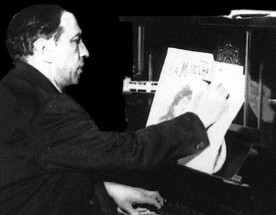
Enrique Saborido was an Uruguayan tango pianist, violinist, composer and dance teacher.

Julio Irigoyen was an Argentine film director notable for his work during the Golden Age of Argentine cinema.
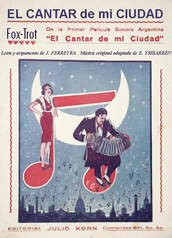
El Cantar de mi ciudad is a 1930 Argentine film directed and written by José A. Ferreyra. The film has historical significance as it was the first ever sound film produced in Argentina. The film was released on 3 October 1930.
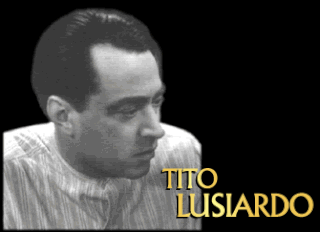
Tito Lusiardo was an iconic Argentine film actor and tango singer, notable for his work during the Golden Age of Argentine cinema.

Buenas noches, Buenos Aires is a 1964 Argentine musical film comedy directed by and starring Hugo del Carril. The film was premièred in Buenos Aires on October 10, 1964.

Enrique Domingo Cadícamo was a prolific Argentine tango lyricist, poet and novelist. From an initial Symbolist bent, he developed a distinctive, lunfardo-rich style from an early age, and by 1925 he had his first piece, Pompas de jabón, sung by Carlos Gardel. Other notable compositions include Madame Ivonne, Che, papusa, oí, Anclado en París, Muñeca brava, Al Mundo le falta un Tornillo, Pa' que bailen los muchachos and Los mareados, originally titled Los dopados, about a couple that vows to get drunk after realizing their love is over.

Pedro Florindo Sassone was an Argentine violinist and composer, leader of his eponymous orchestra, which played tango music, from the 1940s up to the 1970s.
Tapiales is a town in Argentina. It is located in La Matanza Partido and forms part of Greater Buenos Aires. Tapiales had a population of 15,158 at the 2001 census.
The Argentine Constitutional Reforms of 1949 were approved during Juan Domingo Perón's government. This new constitution was a major revision of the Constitution of Argentina. Its goal was to modernize and adapt the text to the twentieth century's concepts of democracy, with a bill of social rights, including better working conditions for the working class, right to education, etc. It also allowed for the indefinite reelection of the president.
The 1948 Oxford-Cambridge rugby union tour of Argentina was a series of matches played in Argentina by a mixed selection of players from Oxford and Cambridge universities in 1948. The matches were held in Buenos Aires and Rosario.
Antonio Ber Ciani was an Argentine actor and film director notable for his work during the classical era of Argentine cinema. He is known for films such as Don Bildigerno de Pago Milagro.
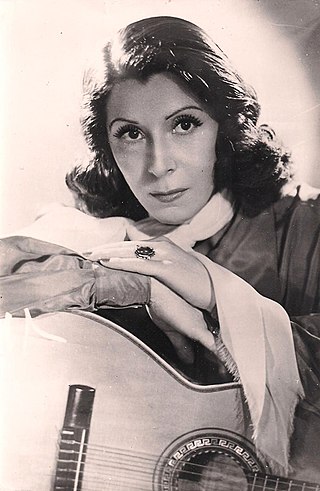
Nilda Elvira Vattuone, better known by her stage name Nelly Omar, was an Argentine actress and singer during the Golden Age of Argentine Cinema. She was successful as a tango singer, performing on numerous radio shows and performed canción criolla. Her film career began in 1940. She was blacklisted after the ouster of Juan Perón for having sung his anthem, Soy La Descamisada and did not work again until the 1970s. From her comeback in 1972, she remained an active performer until her death.

The Serbian Orthodox Eparchy of Buenos Aires, South and Central America is a Serbian Orthodox Church eparchy (diocese) with the main headquarters located in the city of Buenos Aires, Argentina. The diocese has 20 churches in Argentina, Brazil, Chile, Dominican Republic, Venezuela, Ecuador, El Salvador, Colombia and Peru. On October 13, 2012, was realized the first session of diocese under the rule of the actual administration of Metropolitan bishop Amfilohije Radović. The decision of the Holy Assembly of Bishops of the Serbian Orthodox Church brought in May 2018 elected Kirilo Bojović the first Serbian Bishop of Buenos Aires and South-Central America. He was enthroned in the Cathedral church of Nativity of Virgin in Buenos Aires, Argentina, on 4 September 2018.
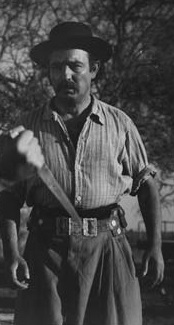
Raúl del Valle was a Chilean film and theatre actor who performed for most of his career in Argentina.

Osvaldo J. Peredo was an Argentine tango singer. He was a follower of Carlos Gardel. He is credited with the renaissance of the tango in Argentina.